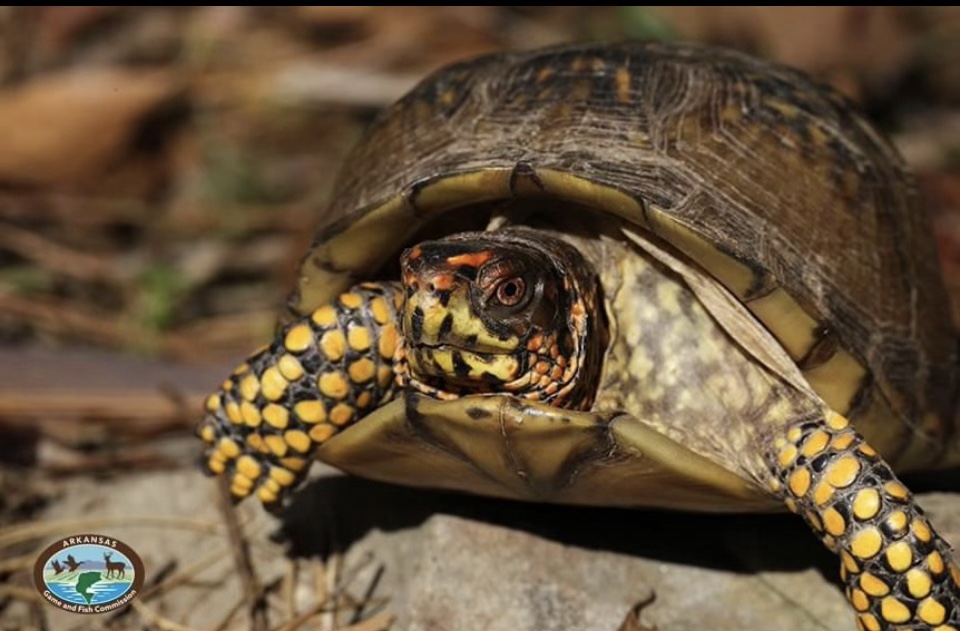🐢 What kind of box turtles live in AR?
The three-toed box turtle and the ornate box turtle. Both of these species are terrestrial, which means they live on land unlike our many other water turtles. The term “box” comes from the fact that the turtles’ lower shells has a hinge and closes shut against the upper shell to protect the animal from predators. Three toed-box turtles are found statewide. Ornate box turtles prefer prairie and grasslands, little of which is left in Arkansas. They are much less common and are found in isolated areas of northern, western and central AR. Its shell is more brightly colored than that of the three-toed.
🐢 What do I do if I see a box turtle in the road?
We see box turtles crossing the road this time of year on the hunt for food, mates and a warm spot to bask in the sun. Box turtles did not evolve amid thousands of miles of busy highways—many die on roadways. Check to be sure it’s safe and steer around it. If it’s a safe place to stop, move the turtle across the road in the direction it was headed. It is not a good idea to move a box turtle to another location. They live their entire lives in a small area (2 to 5 acres) and have a homing instinct and will try to return to their home range.
🐢 Do they make good pets?
No, do not keep them as pets. Their nutritional needs are not easy to meet in captivity. They are likely to die from improper care and for most that means slow starvation. If you keep one for a short time, return it to the exact spot where it was found. Do not paint their shells, which harms their ability to camouflage themselves from predators.
🐢 What is a box turtle’s life history?
Box turtles are omnivores and eat all types of insects and plant matter (earthworms, insects, snails, slugs, berries, mushrooms and green-leafed vegetation). They are quite long lived—50 to 80 years and occasionally more than 100 years. They lay about 6 eggs at a time, but few will make it to adulthood. They hibernate in shallow burrows covered with leaf litter. It is a slow, gradual process to go into hibernation. Male box turtles generally have red eyes, and females have yellowish-brown eyes. Also, the male’s plastron (lower shell) is a bit concave.
🌱Habitat destruction is their greatest threat.
